Fun with "-stans"
Some interesting facts about countries named "-stan"
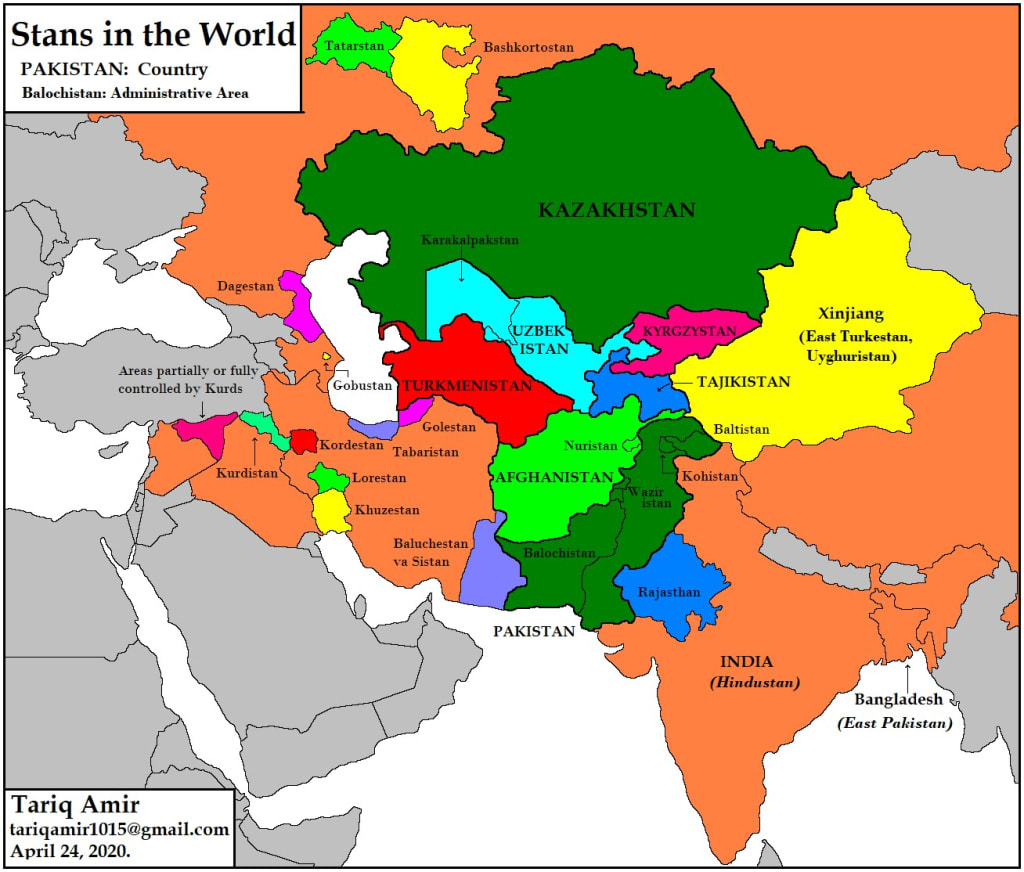
Recently, I published a story with some facts about my home country and got some good feedback on it, which led me to the idea to write up some fun facts about the countries and places whose name ends with "-stan."
First of all, just a little history on the word's etymology. In ancient Persian, the word "istan" means "place of, land of." In Sanskrit, the same meaning is carried by the word "sthan" with the silent "h." In Avestan, an Old Iranian language, the word "st'an" has the same meaning. Since all these languages come from one Indo-Aryan protolanguage, it is not surprising that the words and their meaning are so close. So, when you hear the name of a place with a "-stan" ending, decode it as a "land of..." whatever the ethnic, religious, or geographic group of people comes in front of it: Usbekistan - the land of Uzbeks, Turkmenistan - the land of Turkmen, Hindustan - the land of Hindu, etc.
Even though there are a lot of places on earth that have "-stan" at the end of their name (see the map above), only seven have the status of sovereign countries: Afghanistan, Kazakhstan, Kyrgyzstan, Pakistan, Tajikistan, Turkmenistan, and Uzbekistan. Together, they form the region that is generally known as Central Asia (although Pakistan, the dark green country shaped like a duck, also drops into south Asia).
Five of the seven -stans (excluding Afghanistan and Pakistan) used to be part of the Soviet Union. After the 1917 Bolshevik Revolution and through the Civil War that ended in 1922, they were referred to as one area - Turkestan, i.e. the land of Turks. The formation of the USSR officially ended in 1936, and the Central Asian republics' borders seem to have been deliberately drawn in an interlocking way so that they stay interdependent forever. A historical map below, albeit in Russian, gives dates when all the republics' borders were formalized between 1922-1936.
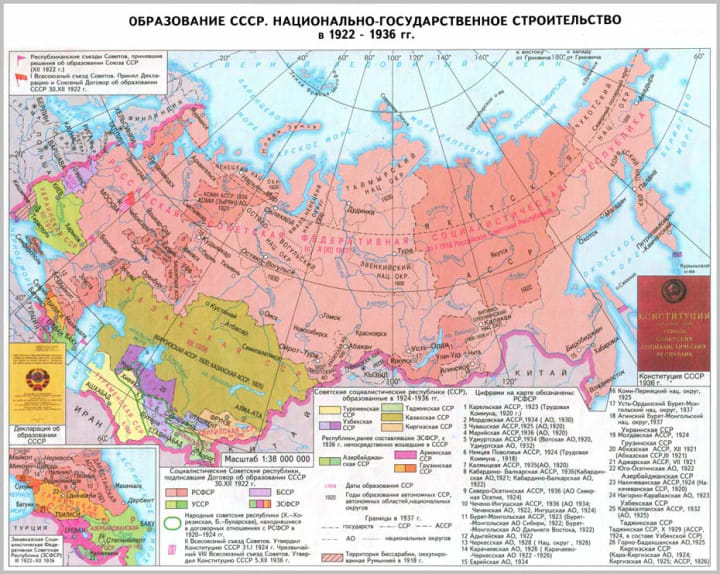
Some fun geographic facts: Uzbekistan has borders with all but one (Pakistan) "stans," while Pakistan borders only one - Afghanistan. Kyrgyzstan and Tajikistan, while completely landlocked, have the highest mountains in the region and produce most electricity for Central Asia on their USSR-era hydro-power plants. Turkmenistan is mostly desert (Karakum), as well as a large part of central Uzbekistan (Kyzylkum). The famous Fergana Valley, a significant cultural and economic area on the Silk Road, the history of which goes back to Persia, is shared among Uzbekistan (which houses two of the oldest cities in the valley - Samarkand and Bukhara), Tajikistan and Kyrgyzstan. Fergana Valley is a fertile region with the developed agriculture and wide variety of crops and fruits. As we say, everything grows in Fergana.
When the Soviet Union collapsed, the five post-Soviet states became independent countries. Even though they all have democratic secular constitutions, most of them remain authoritarian and saw return of Islam as a dominant religion. Islamic radicalism resulted into a 1991-1993 civil war in Tajikistan and later terrorist attacks in Uzbekistan and Kyrgyzstan. Currently, all the countries are stable and most are safe for travel, despite general misconceptions.
The political systems in the region represent the entire spectrum: from the totalitarian regime of extremely closed Turkmenistan through authoritarian regimes in Tajikistan, Uzbekistan and Kazakhstan to a relatively open parliamentary democracy of Kyrgyzstan, the absolute record-holder of revolutions: it had three since independence, every time deposing an authoritarian ruler and sending them all into exile.
Currently, Kazakhstan is thought to be the "richest" country in the region, mostly due to its fossil-fueled economy, with the highest number of oligarchs and in general higher levels of salaries and living standards. Tajikistan remains the poorest since the Soviet times. In Turkmenistan, citizens have basically free utilities and education but remain poor and have no access to Internet. In all countries, there are large economic disparities between urban and rural populations.
There is a lot of diversity in the region's population: Central Asia was a huge deportation destination for various ethnic minorities displaced by Stalin from the Caucasus, Crimea, Volga (Germans), Far East (Koreans) and the Baltic states. During World War II, a lot of evacuees from the Nazi-occupied Belarus, Ukraine, and Russia ended up in Central Asia as well and never returned because their houses and families there had been destroyed. Thus, Central Asia became a hospitable melting pot for many ethnicities.
The titular ethnic groups in four post-Soviet countries belong to the Turkic culture and their languages - to the Turkic group. The only exception is Tajikistan, which descends from the Persian culture, with the Tajik language being a close relative of Farsi. All seven "-stans" celebrate Nowruz on March 21 - an ancient Zoroastrian holiday ushering in the spring, and observe Ramadan and other Muslim holidays if not on the official national calendar than as a part of a cultural tradition.
Central Asian cuisine is fabulous and unique, representing the diversity of various ethnic groups and their food traditions and preferences. You will be blown away by various versions of the famous "plov" (pilaf) - a rice and meat dish that can be prepared with a variety of additional ingredients unique to the region where it is made. "Lagman" is another signature dish that needs to be tried at least once in everyone's life time. You will never forget the taste of the "nan" (another shared Sanskrit word for "bread"). I hope you have an opportunity to explore other Central Asian dishes as well.
Finally, while looking for a good illustration for this story, I asked ChatGPT to create "a map of 7 stans of the world." It seems to think that one day, stans will be taking up the entire Eurasia, if not the world. And its version of "Kazakhstan" is Putin's nightmare. Japan's, as well. I can't even begin to count how many countries would be upset by this map, including Mongolia, China, India, and Iran, if they take it seriously. Let's just take it as a fun joke.
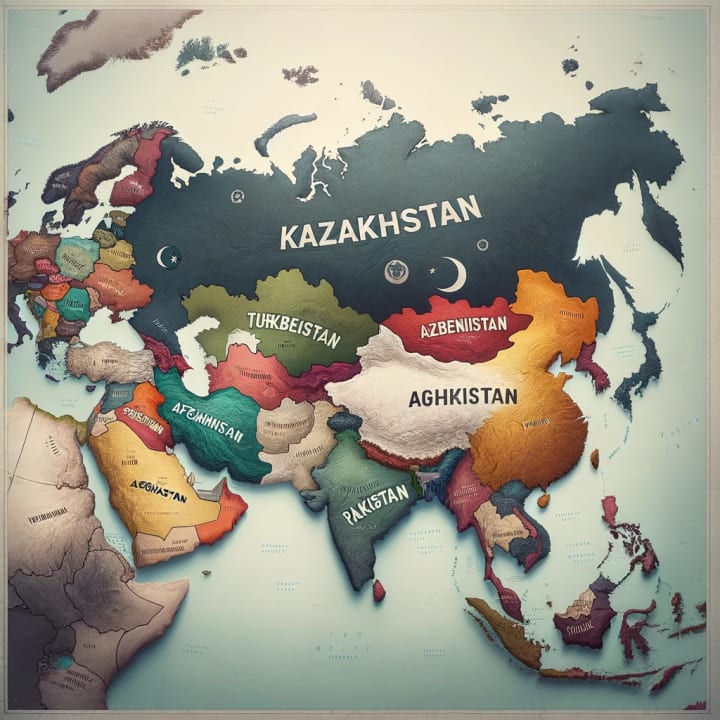
Hope this is enough for now. If you want me to continue with this "Fun with -Stans" series, please ask me a question in the comments. Thank you for reading, as always!
About the Creator
Lana V Lynx
Avid reader and occasional writer of satire and short fiction. For my own sanity and security, I write under a pen name. My books: Moscow Calling - 2017 and President & Psychiatrist
Enjoyed the story? Support the Creator.
Subscribe for free to receive all their stories in your feed. You could also pledge your support or give them a one-off tip, letting them know you appreciate their work.

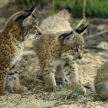
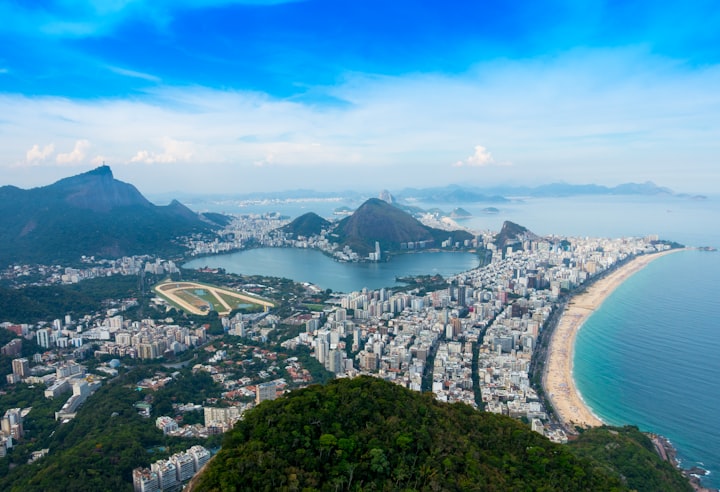



Comments (5)
I was today years old when I learned that India is known as Hindustan 😅 I always learn something new from your pieces. Also, I laughed so much at ChatGPT's map! 🤣🤣🤣🤣
I so much want to go to Uzbekistan, and I suspect there are places I want to go to that I have no idea about in central asia - its a mysterious region from the white british perspective - we just dont learn much about it!
That was a fun and informative piece. I don't normally link bomb like this but Richard Osman's "House of Games" has a great one called "Where Is Kazakhstan?" https://vocal.media/journal/my-education-7hhj0rae?via=mike
Valuable information.
A very informative piece. Thank you for this!